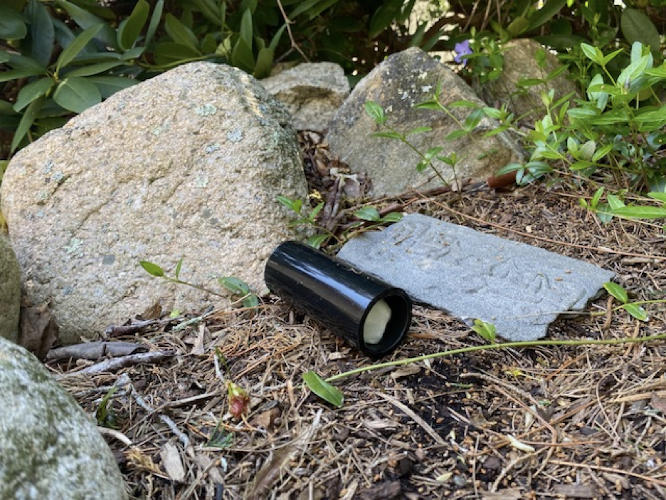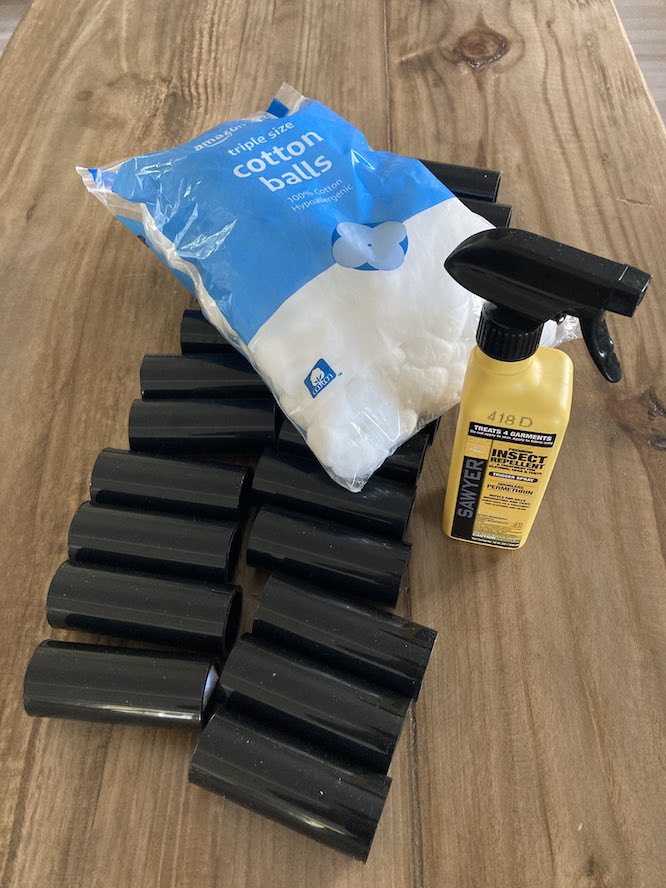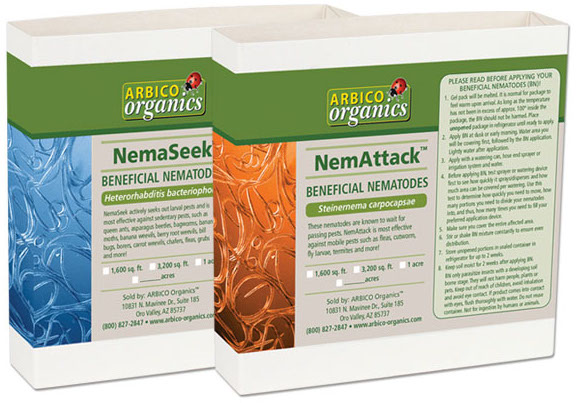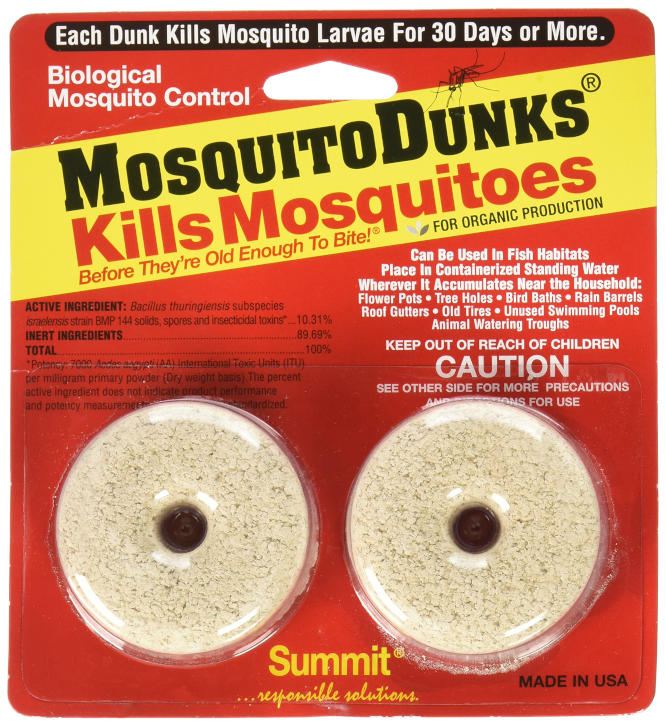
Like many people in our neighborhood, we fell for the “non-toxic pest control” services offered in our area. We were concerned primarily about ticks, so we signed up with a company to spray our yard with a treatment containing herbal extracts and oils, applied every three weeks. It seemed to work pretty well and we were relieved to find an alternative to standard chemical insecticides.
Then at the start of year two, we started to wake up. What about the other insects? Wasn’t this spray killing them too? Don’t the plants and the birds need insects? Sure, the company was not applying long lasting chemicals, but the spray was interfering with more than just ticks and mosquitos. So began our quest to see what else we could do that would be less harmful.
Tick Tubes
Mice and other small rodents such as chipmunks are common carriers of ticks. Tick tubes were developed to help interrupt the life cycle and therefore the spread of ticks. Tick tubes are sold as small cardboard tubes, similar in size to cardboard toilet paper inserts. They are filled with cotton that has been laced with permethrin, an insecticide commonly used as a spray on clothing to kill any ticks that try to reach you by climbing on your clothing. You place the tick tubes on your property where rodents likely travel or live. The rodents make use of the cotton as nesting material, and once the cotton is in their nest, any ticks on the rodents are exposed to the permethrin and die.
The commercial versions of tick tubes made from cardboard are expensive and also degrade quickly, especially with exposure to rain, which means you have to buy them again and again. We got tired of paying so much money repeatedly, and thought there must be a better way, so we developed our own version.
DIY Tick Tubes
We bought two 5-foot sections of black PVC pipe, and cut it into four-inch sections. Then we soaked some cotton balls in permethrin, and inserted three cotton balls each into the sections of PVC. The PVC does not degrade like the cardboard, and so we can refill them every few months and not worry about them disintegrating after a few months. This is much less expensive than repeatedly buying the expensive commercial versions.
DIY Wins: More than Four Times the Number of Tick Tubes
Here is a cost comparison between the commercial tick tubes and the DIY version:
12 Commercial Tick Tubes for $58 – Must buy repeatedly
30 DIY Tick Tubes for $56 – Refillable
2 5-foot sections of 1-1/4 in. PVC pipe: $30 (Home Depot)
PVC cutter: $15
24-ounce bottle of permethrin: $18
200 cotton balls: $8
For only $56 you get more than twice as many tick tubes, and the tubes can be refilled at least one more time with the cotton balls left over, making the DIY approach more than four times as cost effective. The 24 ounces of permethrin will provide for multiple refills, so for another mere $8 you can refill the 30 tick tubes twice more, making the DIY solution wonderfully inexpensive.

Share the Extra Tick Tubes with Neighbors
We live on a fairly large property, and only use 8 tick tubes. If you make 30 tick tubes, please share the extras with your neighbors. Everyone will benefit from this, including you, because the adjoining properties probably contain some ticks.
Tick tubes are not a complete solution but they can be part of a larger strategy of control. That’s where our next phase comes in: Nematodes!
Soil Nematodes
Nematodes are microscopic, worm-like organisms found in soil and other environments. We had not heard of these creatures before, and were surprised to learn about how specific species of soil nematodes can help reduce or eliminate tick populations. The nematodes enter the tick through natural openings or by penetrating the cuticle, and then release bacteria that cause septicemia, ultimately leading to the tick’s death. You need to make sure you buy an appropriate species and follow the instructions for application.
We found a company called Arbico Organics that recommends you apply two types: Steinernema feltiae and Heterorhabditis bacteriophora. Steinernema attacks mobile pests, including ticks, while Heterorhabditis goes after stationery pests and ticks. The nematodes arrive by overnight or two-day shipping in a small ice-pack package, and must be stored in your refrigerator and used within two weeks. The two species of nematodes arrive in two separate small plastic containers, in a powdery substrate.

It is required that the ground where you are going to apply the nematodes be wet, because the nematodes need a moist environment, so it’s best to try to ensure that the nematodes arrive on a day when it rains, or has rained very recently. Just watch the weather report, and if it looks like it’s going to rain two days later, order the nematodes so that they will arrive when the ground is wet, or will soon be wet. Otherwise you will have to wet down the entire area yourself, which requires extra effort.
To apply the nematodes, use a hose end sprayer, the kind that is commonly used for applying other garden products that are mixed with water in the end sprayer. We hadn’t timed the arrival of the nematodes to correspond with a good rain, so we soaked the soil before we applied the nematodes. We applied the nematodes with the hose end sprayer to all areas where ticks might be present, especially at the base of bushes and other plants, and in any small piles of organic debris. See the instructions on the package to determine how often to reapply during tick season.
Despite these efforts, it’s still important to take note of any ticks in your yard or on your pets, wear protective clothing and check for them on your body.
Mosquito Dunks & Bits
Mosquito Dunks and Mosquito Bits are products that contain natural bacteria called Bacillus thuringiensis israelensis (BTI). When either of these products is put in standing water, such as birdbaths or rain barrels, the bacteria slowly release a toxin that kills mosquito larvae, but does not affect other organisms. These products are environmentally friendly since these bacteria do not harm people, pets or wildlife.

Mosquito Dunks are shaped like a small donut and are designed for larger bodies of water such as lakes, ponds and rain barrels. The Bits are granules that can be scattered in smaller areas of standing water like bird baths. The Dunks are easy to break up should you want to use them in smaller containers.
Keep in mind that this method does not affect adult mosquitoes, but it is quite an effective investment in preventing the development of adult mosquitoes.